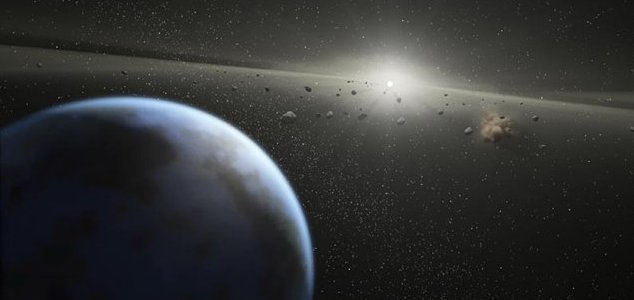Space & Astronomy
May 3, 2017 · 4 comments
4 comments

Analyzing distant solar systems can tell us more about our own. Image Credit: NASA
For this reason, it should be able to tell us much about how our own solar system came in to being.
"This star hosts a planetary system currently undergoing the same cataclysmic processes that happened to the solar system in its youth, at the time in which the moon gained most of its craters, Earth acquired the water in its oceans, and the conditions favorable for life on our planet were set," wrote study co-author and astronomer Massimo Marengo.
Observations using NASA's Stratospheric Observatory for Infrared Astronomy (SOFIA) indicate that this distant solar system is home to an inner and outer disk with a prominent gap between them.
"There is a gap most likely created by planets," said Marengo.
"We haven't detected them yet, but I would be surprised if they are not there. Seeing them will require using the next-generation instrumentation, perhaps NASA's 6.5-meter James Webb Space Telescope scheduled for launch in October 2018."
Source: Independent | Comments (4)
Astronomers discover familiar solar system
By T.K. RandallMay 3, 2017 ·
 4 comments
4 comments
Analyzing distant solar systems can tell us more about our own. Image Credit: NASA
A young solar system located a mere 10 light years away appears to be remarkably similar to our own.
Discovered recently in the constellation Eradinus, the solar system surrounding the star Epsilon Eridani is not only very similar to our own but is also the closest known solar system with a star that is essentially a younger version of the Sun.For this reason, it should be able to tell us much about how our own solar system came in to being.
"This star hosts a planetary system currently undergoing the same cataclysmic processes that happened to the solar system in its youth, at the time in which the moon gained most of its craters, Earth acquired the water in its oceans, and the conditions favorable for life on our planet were set," wrote study co-author and astronomer Massimo Marengo.
"There is a gap most likely created by planets," said Marengo.
"We haven't detected them yet, but I would be surprised if they are not there. Seeing them will require using the next-generation instrumentation, perhaps NASA's 6.5-meter James Webb Space Telescope scheduled for launch in October 2018."
Source: Independent | Comments (4)

The Unexplained Mysteries
Book of Weird News
AVAILABLE NOW
Take a walk on the weird side with this compilation of some of the weirdest stories ever to grace the pages of a newspaper.
Click here to learn more

Support us on Patreon
BONUS CONTENTFor less than the cost of a cup of coffee, you can gain access to a wide range of exclusive perks including our popular 'Lost Ghost Stories' series.
Click here to learn more
Extraterrestrial Life and The UFO Phenomenon
United States and the Americas
Palaeontology, Archaeology and History
Other World News
Total Posts: 7,751,574 Topics: 324,008 Members: 203,511
Not a member yet ? Click here to join - registration is free and only takes a moment!
Not a member yet ? Click here to join - registration is free and only takes a moment!



































Please Login or Register to post a comment.